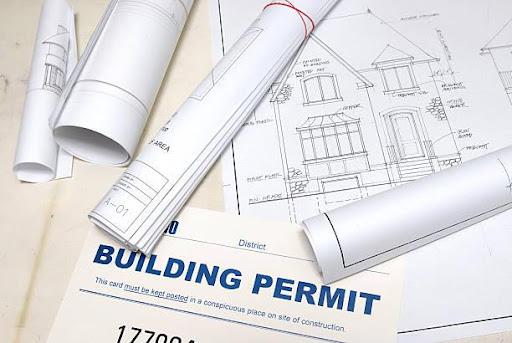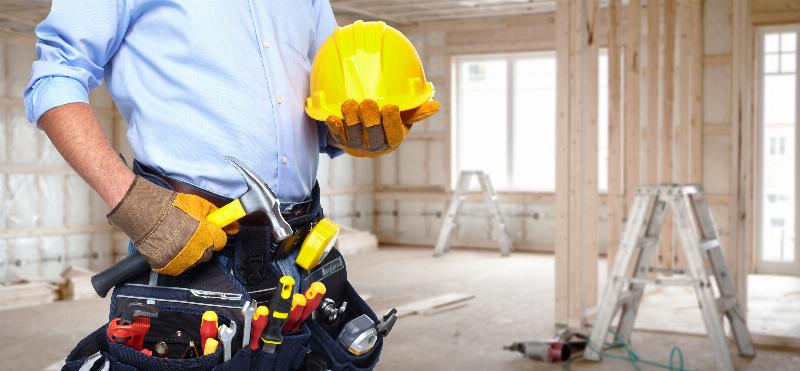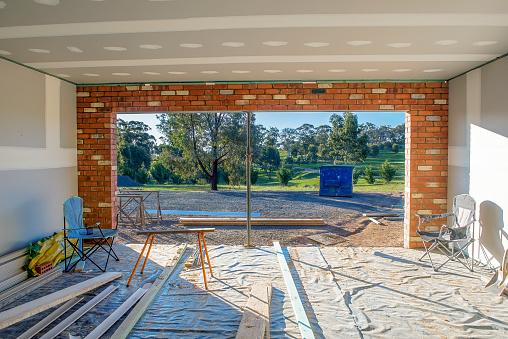Welcome to our comprehensive guide on maximizing space and functionality by adding a garage to your existing setup. Expanding your living space and boosting your home’s value are top priorities for many homeowners in Houston, and a well-designed garage addition can help you achieve both. Whether you’re looking to accommodate more vehicles, create a dedicated workshop, or enhance storage options, you’re in the right place. We recognize how important it is to have a versatile and thoughtfully designed garage that fits your needs. In this guide, we’ll cover everything from planning and design to construction and finishing touches, offering expert advice to help you transform your vision into reality.
Understanding the Significance of Garage Space

A garage serves a multitude of purposes beyond mere car parking. It can be transformed into a storage haven, a workshop, or even a home office. Surprisingly, a recent study conducted by the National Association of Home Builders revealed that 70% of homeowners use their garages for activities other than parking their cars.
The importance of garage space stems from several factors. Firstly, it assists in keeping your belongings organized and protected from the elements. Additionally, it provides a secure storage area for valuable items like tools and sports equipment. Moreover, a garage can double as a stress-relieving workshop or hobby space.
Reasons to Consider Adding a Garage to Your Existing Setup
There are numerous motivations behind the decision to add a garage to your existing one. Some common reasons include:
- Insufficient Space: If your current garage falls short in accommodating your needs, an additional garage can provide the extra room you require.
- Functional Improvements: A poorly functioning garage can benefit from an addition, helping you optimize the layout and overall functionality.
- Increased Storage: If you find yourself in need of more storage space for your belongings, a garage addition can provide the necessary room.
- Enhanced Curb Appeal: By adding a garage, you can significantly enhance the visual appeal of your home, making it more appealing to potential buyers.
Pros and Cons of Garage Addition
Pros | Cons |
Increased storage space for vehicles, tools, and equipment | Costly investment requiring budget planning and financing |
Versatile area for a workshop or extension of living space | Potential disruption during construction and inconvenience |
Enhanced organization and functionality of the property | Need for permits and adherence to building codes and regulations |
Additional workspace for hobbies and activities | Time-consuming planning and coordination of the project |
Potential for increased property value and curb appeal | The potential need for modifications as needs and lifestyle change |
Secure parking for vehicles and protection from the elements | Impact on existing landscaping and outdoor space |
Selecting the Right Contractor for Your Project
Choosing a reliable and experienced contractor is essential when it comes to your garage addition project. Here are some tips to help you make the right choice:
- Obtain Multiple Estimates: Request quotes from different contractors to compare prices and services.
- Check References: Verify the contractor’s reputation by checking references from previous clients.
- Licensing and Insurance: Ensure that the contractor possesses the necessary licenses and insurance coverage.
- Get It in Writing: Document all aspects of the project, including timelines, costs, and specifications, in a written agreement.
The cost of a garage addition in Houston varies depending on factors such as size, materials, complexity, and location. Setting a realistic budget is essential. Obtain multiple quotes from reputable contractors to compare costs and choose the one that aligns with your financial plan.
Garage Addition Cost Breakdown
Item | Cost Range |
Architectural Drawings | $1,000 – $3,000 |
Building Permits | $500 – $1,000 |
Foundation Work | $3,000 – $5,000 |
Framing | $5,000 – $7,000 |
Roofing | $3,000 – $6,000 |
Electrical and Plumbing | $2,000 – $4,000 |
Insulation | $1,000 – $2,000 |
Finishing Touches | $2,000 – $5,000 |
Additional Upgrades | Varies |
Remember to conduct thorough research, consult with experts, and create a comprehensive budget before starting the construction process. By following these steps and incorporating your unique vision, you can transform your existing garage into a versatile space that meets your specific needs and contributes to the overall beauty and functionality of your Houston home.
Steps Involved in Adding a Garage to Your Existing Setup

Adding a garage to your home involves evaluating space, obtaining permits, and planning for functionality and design. The process includes construction, professional help, and finishing touches to ensure a seamless and valuable addition.
1. Assessing the Feasibilit
a. Evaluating the Existing Garage
Start by evaluating the size and layout of your current garage to see if it can accommodate the addition. Check floor space, ceiling height, and the arrangement of doors and windows to determine if modifications are needed. It’s also important to assess the structural integrity, including the foundation, walls, and roof, to ensure the garage is stable enough for an addition. If necessary, consult with a contractor or structural engineer to ensure everything is safe and sound.
b. Determining Space Requirements
Consider what you need from the garage addition. Whether it’s more space for vehicles, a workshop, or a multi-use area, knowing the intended purpose will help shape the design. Think about future needs too—whether for expanding the family or increasing storage. Incorporating flexibility in your design ensures that the space remains useful over time.
2. Design Considerations
a. Matching the Architectural Style
When adding a garage, it’s important to keep the design consistent with your home’s existing architectural style. Choose materials, colors, and finishes that match the current structure for a cohesive look. A well-matched addition will blend in better and maintain the property’s overall aesthetic appeal.
b. Planning for Functionality
A functional garage addition should prioritize adequate storage solutions, such as built-in cabinets, overhead shelving, and wall-mounted organizers. Plan the layout so that the flow of traffic within the space is smooth, and consider how easy it will be to access parking areas, storage, and workspaces.
3. Obtaining Permits and Approvals

a. Researching Local Building Codes
Before you start, check the local zoning regulations to understand the restrictions on building size, setbacks, and other guidelines that might affect the garage addition. Understanding these local rules will help you avoid legal issues later in the process.
b. Securing Necessary Permits
You’ll need to obtain building permits from your local authorities before proceeding. These permits ensure that your garage addition follows safety regulations and meets building codes. If you’re adding electrical or plumbing features, be sure to get the necessary permits for those as well.
4. Hiring Professionals
a. Working with an Architect or Designer
An architect or designer can help translate your ideas into a functional, well-designed plan. They will ensure the addition is both aesthetically pleasing and up to code, helping you optimize space while maintaining structural integrity.
b. Selecting a Reliable Contractor
Choose a contractor who is experienced and reputable. Verify their credentials and insurance, and ask for references. Obtain detailed cost estimates to understand the scope of work and ensure you’re on the same page regarding the project’s timeline and budget.
5. Construction Process

a. Preparing the Site
The construction area must be cleared of any obstructions before building begins. Make sure any old structures or debris are removed to allow for a smooth start. It’s also important to assess the site’s drainage to ensure proper water flow and avoid potential water damage later on.
b. Foundation and Structural Work
Start by pouring the concrete footings, which will provide stability for the garage. Once the foundation is set, framing the walls will establish the size and shape of the new structure. This is a crucial step in ensuring the addition is sturdy and long-lasting.
6. Electrical and Plumbing Considerations

a. Extending Electrical Wiring
You’ll need a licensed electrician to extend the electrical system for your garage addition. The electrician will ensure that the wiring is up to code and can handle the electrical load needed for lights, outlets, and any other systems in the new space.
b. Adding Plumbing Connections
If your garage requires plumbing, a licensed plumber will connect the new pipes to your existing water supply. Additionally, they’ll ensure that proper drainage systems are installed to prevent water buildup and avoid damage.
7. Insulation and HVAC Integration
a. Insulating the New Garage Space
Proper insulation is essential for maintaining a comfortable temperature and improving energy efficiency. Select insulation materials suited to your garage’s needs, and consider sealing air leaks and insulating the garage door for better climate control.
b. Integrating Heating and Cooling Systems
To keep the garage comfortable year-round, you may need to extend your existing HVAC system or install separate units for heating and cooling. This decision will depend on the size of the addition and the intended use of the space.
8. Finishing Touches
a. Installing Doors and Windows
Choose doors and windows that complement your home’s existing design. Look for security features such as reinforced doors and impact-resistant windows to keep your garage secure.
b. Painting and Flooring Options
Opt for durable, moisture-resistant paint and flooring that can withstand the demands of a garage environment. Consider materials like epoxy flooring for added durability and visual appeal.
9. Final Inspections and Completion
a. Scheduling Inspections
Once construction is complete, schedule final inspections for the structure, electrical, and plumbing systems to ensure everything complies with local codes. Any necessary corrections should be addressed promptly to get approval for your garage addition.
b. Adding Finishing Touches
To complete the project, consider landscaping the surrounding area and adding elements like lighting or walkways. Clean up the site to remove any construction debris and tools, making the area ready for use.
Garage Additions in Houston: Local Considerations
When planning a garage addition in Houston, it’s crucial to understand the local climate, including the hot, humid summers and frequent rainfall. Proper insulation, ventilation, and drainage systems are essential to ensure a comfortable, long-lasting garage. Moisture-resistant materials are also key to handling Houston’s extreme weather conditions.
In addition, researching Houston’s building codes and permitting processes is vital to avoid delays and ensure compliance. Hiring local professionals who are familiar with these regulations and the unique climate conditions will help ensure that your garage addition is both structurally sound and compliant with all local requirements.
Ready to Add a Garage to Your Home in Houston?
At Smart Remodeling LLC, we specialize in home addition projects, including garage additions, throughout Houston and the surrounding areas. Our team of skilled professionals provides personalized design solutions and manages every step of the construction process, ensuring your project meets local building codes and regulations. We also offer a wide range of other services, such as kitchen remodeling, bathroom remodeling, and general home improvements.
With years of experience and a track record of satisfied clients, we’re here to help transform your garage into a functional and stylish space. Contact Smart Remodeling LLC today for a consultation. Let’s discuss your project, budget, and timeline to create the perfect garage addition for your home!
Conclusiom
In conclusion, adding a garage is a valuable investment that enhances your home’s functionality and storage space. By carefully planning the design, ensuring compliance with local regulations, and hiring the right professionals, you can create a garage that meets your needs and adds long-term value to your property.






